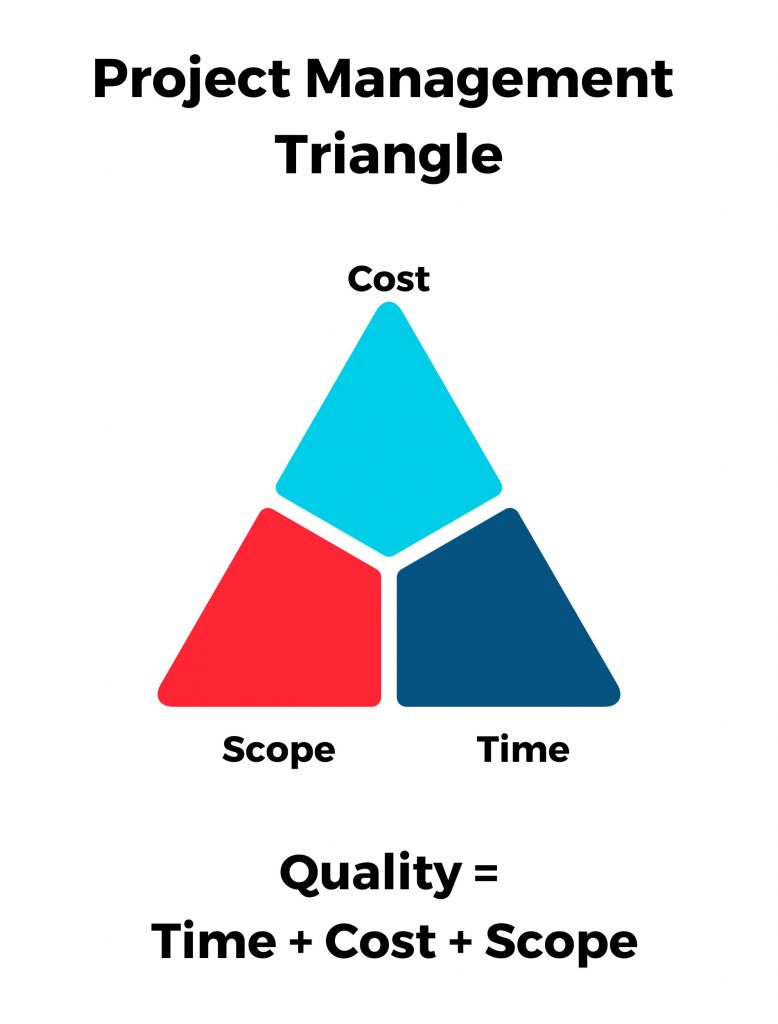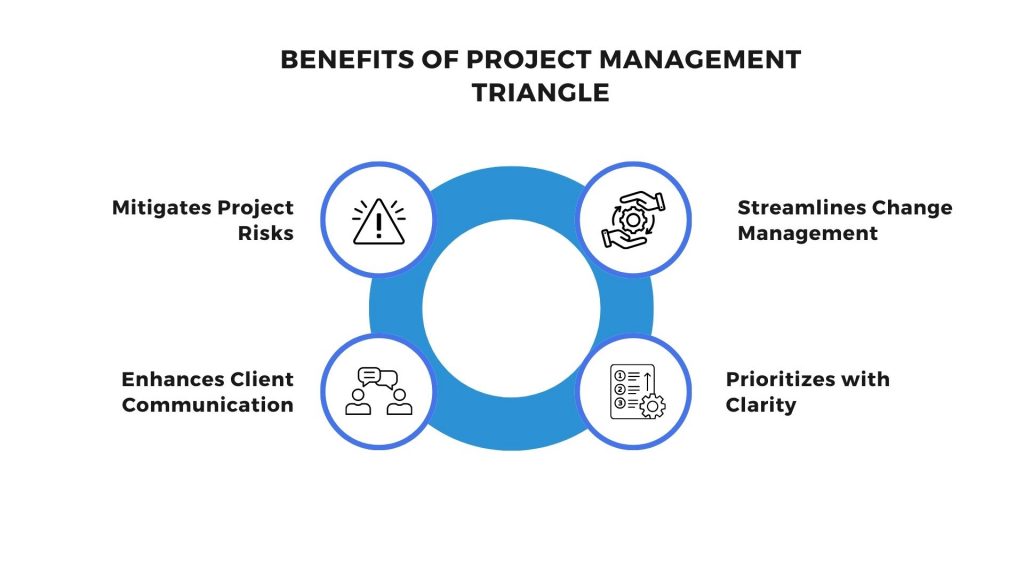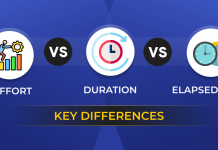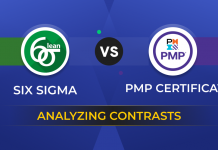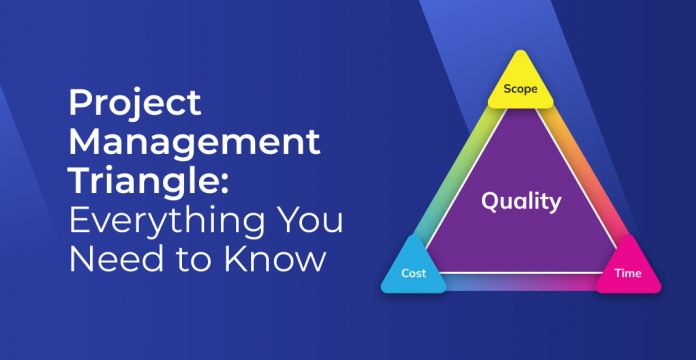
Project managers hold a crucial role within organizations. A project management triangle turns out to be a very effective model for project managers as they oversee various aspects, from formulating and executing plans to managing teams and ensuring successful project completion within budget and time constraints while maintaining high-quality results.
In project management, success is a delicate balance of time, cost, and scope. Project managers navigate this complex web of constraints to ensure successful project completion. Project managers utilize the project management triangle to assess and comprehend the challenges inherent in project implementation.
In this blog, we’ll dive into the essence of the project management triangle, exploring how these three elements interconnect and how to overcome the challenges associated with each.
Table of Contents:
- What is the project management triangle?
- Components of Project Management Triangle
- How Are These Constraints Related?
- Why Is the Project Management Triangle Important?
- Strategies for managing the project triangle
- Common Applications of Project Management Triangle
- Conclusion
What is the Project Management Triangle?
The Project Management Triangle acts as a model that embodies the three essential constraints within a project: Scope, Time, and Cost. These factors are intricately linked, and any alteration to one invariably influences the others. Effective management is imperative to achieve project success while adhering to these constraints.
This triangle illustrates the interconnectedness of these variables. When one variable changes, the remaining two must be adjusted to maintain the triangle’s integrity. If the triangle is disrupted—meaning one point is altered without corresponding adjustments to the other points the project’s quality will be compromised.
For instance, if a client suddenly shortens the project’s timeline, it will likely require additional resources or a reduction in scope. For instance, if a team of 10 individuals works on a website project, the project manager may need to allocate more personnel to meet the tightened deadline.
Components of Project Management Triangle
As mentioned, the project management triangle comprises three key elements, often represented as the triangle’s sides: project scope, cost, and time. When these components are in harmonious equilibrium, they yield a quality outcome. Adjusting one of these aspects necessitates corresponding modifications to the other two to maintain balance. Imbalance can result in one side of the triangle being disproportionately elongated or shortened, leading to a break.
Cost Constraint
Project cost encompasses the total expenditure on materials, labor, and any additional elements essential for completing the project’s defined scope within the specified timeframe. Clients are consistently concerned with the project’s price tag, and for project managers, accurately estimating project costs takes a lot of work.
Changes in scope or timelines inevitably lead to fluctuations in project costs. Common implications of cost constraints include unexpected shifts in supplier pricing, staffing gaps with associated recruitment costs, and adding new deliverables to the project’s scope.
Scope Constraint
The project’s scope comprises a detailed list of specific tasks, objectives, deliverables, deadlines, and other essential elements outlined in the project plan. The scope constraint gives project managers clear objectives and assists in cost estimation and task scheduling. Alterations to the project scope, at any stage, can adversely affect project progress, potentially necessitating delays in delivery dates, increased labor costs, or even both.
Time Constraint
The time constraint in a project refers to the expected project delivery date specified by the client. Time constraints are often among the most challenging obstacles for project managers to navigate. Delays in materials or unexpected challenges the team faces can significantly disrupt project timelines, making it difficult to meet fixed time constraints.
Since time limitations are directly intertwined with project cost and scope, any disruption to the time constraint can lead to additional costs or substantial adjustments to the project’s overall scope. Common implications of time constraints include unforeseen delays in vendor resources, the addition of new deliverables to the project scope by the client, and underestimation of task durations within the project.
How Are These Constraints Related?
The Project Triangle encompasses two fundamental types of relationships. The first pertains to the connection between scope and the other two project variables. Scope maintains a direct proportionality with both time and cost, signifying that they move in the same direction. Expanding the scope necessitates increasing time and financial resources to accommodate a larger project.
The second type of relationship involves time and cost, displaying an inverse proportionality. These two factors move in opposing directions. If cost reductions are mandated, timelines must be extended. Conversely, additional budget allocation becomes imperative to meet the accelerated schedules if faced with tight deadlines.
It’s important to note that these relationships are unalterable. No action can modify one variable without triggering a corresponding change, directly or inversely, in the other two triangle points. The project triangle is called the “iron triangle” of triple constraints. Regardless of a project manager’s expertise, the iron triangle remains inflexible and resistant to manipulation.
Why Is the Project Management Triangle Important?
The project management triangle is a valuable tool for project managers, facilitating easier risk management and adaptation to change. It also aids in the precise identification and handling of project priorities, fostering transparent communication with clients. When these aspects are effectively managed, the likelihood of delivering a high-quality final product increases.
Here’s a deeper exploration of these advantages and their real-time application:
Streamlines Change Management
The triangle clearly comprehends the scope, cost, time, and quality interplay. For instance, when a project faces a stringent deadline and a scope modification arises, project managers recognize the need to address the third constraint. They can do so by, for instance, augmenting the team’s expertise to expedite the project, even with an expanded scope. Hence, the triangle equips managers with unique insights into managing change efficiently and effectively.
Prioritizes with Clarity
Understanding the constraints within the project management triangle simplifies pinpointing and managing priorities, culminating in a high-quality final deliverable.
For instance, in a tight budget project, project managers know that meticulous scrutiny of scope and time is essential. An increase in scope, for instance, often necessitates a corresponding budget adjustment, and additional time requires increased expenditure on resources, such as salaries.
Enhances Client Communication
Clients rely on project managers to steer projects toward successful outcomes, often with limited knowledge of project management intricacies. Thus, it falls on the project manager to convey the impact of changes in straightforward, easily understandable terms.
The project triangle offers a visual aid that simplifies the explanation of dependencies between cost, time, and scope, illuminating how a single alteration can affect these constraints.
Mitigates Project Risks
Understanding key priorities enables risk management planners to devise strategies centered around them. Change management plans can also incorporate the interconnectedness of the three constraints, ensuring that a single change doesn’t jeopardize project quality. Clear and effective client communication maintains satisfaction levels, even in the face of risks, preventing them from escalating.
The project management triangle is a multifaceted asset that clarifies project priorities, enhances resource allocation, fosters team communication, and bolsters adaptability. With a firm grasp of the triangle’s dynamics, project managers can effectively steer projects toward successful completion while meeting client expectations.
Master Project Management with Invensis Learnings’ Top Project Management certification courses designed by industry experts!
Strategies for Managing the Project Management Triangle
Now that you understand the project triangle let’s explore some practical tips for effectively applying it in your daily work. Here are concrete strategies for balancing the constraints within the Project Management Triangle:
Set Clear Expectations
Once you’ve determined the limits and priorities of your project, convey them clearly to your client and stakeholders. This helps prevent expectations and ensures everyone is aligned. Project contracts may include special elements to align stakeholders before commencement in industries prone to unforeseen complications, such as construction and engineering.
These elements include contingency budgets approved in advance, lists of common potential delaying factors, and corresponding action plans for each delay. This ensures that clients understand potential events and their implications, reducing confusion when adjustments are made later in the project.
Engage with Stakeholders
Initiate discussions with stakeholders to make acceptable changes and prioritize constraints. Determine whether the project’s deadline is fixed or the budget is stringent. This insight informs your adaptability in case changes become necessary. This vital communication should commence in the project’s early stages and continue consistently throughout its duration.
Establish Robust Risk Management Processes
Incorporate risk planning into your project management process to preempt scope expansion and maintain adherence to budgets and schedules. Identify potential risks and create mitigation plans for each. For more comprehensive guidance, delve into the intricacies of managing project risks.
Develop Change Management Protocols
Change is often an inevitable aspect of projects. Implementing a structured change management process allows for the approval or rejection of changes, ensuring the team remains informed of their impact on the project. This can effectively mitigate scope creep.
Define Your Priorities
Central to the project triangle concept is the understanding that no project can succeed with all three points rigidly fixed. At least one point should remain flexible, allowing adjustments when necessary. For instance, if staying within budget is a priority, unforeseen challenges can be addressed by extending deadlines instead of hastily expanding the workforce. When the client’s timeline is inflexible, securing a pre-approved extra budget ensures the resources to tackle challenges without project delays.
Select a Methodology Aligned with Constraints
Consider adopting a project management methodology that aligns with the specific constraints you encounter. Projects with stringent constraints often benefit from waterfall-type approaches, while those requiring flexibility may lean towards Agile methods like Scrum. In cases where efficiency is paramount, a Lean approach may be the optimal choice.
Maintain Frequent Updates
After establishing an agreed-upon action plan that encompasses potential budget, schedule, and scope adjustments for various scenarios, consistently keep all stakeholders informed of any changes and forecasts throughout the project.
Timely communication ensures preparedness for necessary adjustments and fosters confidence in project execution, regardless of whether certain scenarios materialize.
Common Applications of Project Management Triangle
Achieving equilibrium among the fundamental constraints within the project management triangle is a key strategy for managers to strategize, schedule, and deliver successful projects effectively. By recognizing stakeholder expectations and constraints, project managers can elevate the overall quality and ensure a positive experience for all involved parties.
The project management triangle is their guiding framework, enabling project managers to thoroughly evaluate all scenarios and make decisions in the client’s best interest. Common applications and uses of the project management triangle encompass:
Anticipating and Mitigating Risks
While risks are inherent in projects, a comprehensive understanding of the project’s iron triangle encourages proactive decision-making and risk mitigation. Knowing which constraints are fixed and where flexibility exists empowers project managers to navigate obstacles and achieve desired outcomes.
Enhancing Client Communication
The project management triangle serves as a visual tool, aiding project managers in explaining project constraints to clients and stakeholders, even when their understanding of project management basics is limited.
Adapting to Project Changes
Project managers often contend with changes in scope, timelines, and budgets. A solid grasp of the fixed constraints within the project management triangle equips project managers to adapt to sudden project alterations or new requirements effectively.
Delivering High-Quality Projects
Project managers aspire to deliver projects of the utmost quality to clients. Leveraging the project management triangle and skillfully balancing the project’s fixed constraints can contribute to success across all projects.
How to Implement the Iron Triangle in Project Management?
Every project revolves around the time, money, and scope triangle—the most prevalent constraints in project management. Altering one variable inevitably impacts at least one of the others. Effective project management necessitates adeptly managing trade-offs among the three facets of the triple constraint triangle. These constraints serve as a visual reminder of the repercussions of decision-making on various aspects of the project.
Conclusion
Implementing a project management triangle is instrumental in ensuring the seamless execution of your projects. A proficient project manager must maintain equilibrium among the triple constraints to safeguard the project’s quality and success. When all aspects of the project management triangle are skillfully managed, your project is poised for triumph. Conversely, mismanagement of these variables can lead to project derailment.
A comprehensive comprehension of potential limitations is crucial in averting significant setbacks and enhancing the likelihood of achieving a high return on investment. Furthermore, adopting the right project management software can expedite processes and empower your team to operate efficiently. Therefore, utilize the iron triangle as a visual aid for your projects to proactively address challenges and mitigate risks.
We at Inverness Learning help you and your team better understand the concept. Our PMP certification can significantly enhance your understanding of this concept, further equipping you for effective project management.


